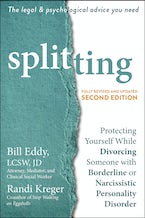Does a client have an interpersonal disorder? If it is an enduring pattern of dysfunctional interpersonal behavior, then there are two key questions to consider as a therapist about the client:
1) Can the client regularly look for their part in the problem at hand?
2) Can the client regularly look for something to do differently in similar situations in the future?
Most people automatically ask themselves these two questions throughout the day. They try to make adjustments to fix interpersonal problems or move away from dysfunctional situations.
People with chronic interpersonal difficulties can go for hours or days without looking at their part in the problem. If they have a personality disorder, then they will lack self-reflection and self-change. This is what keeps the interpersonal difficulties going.
You may be able to silently answer these two questions yourself. If you are unsure, try asking your client. If they respond defensively (e.g., “What do you mean, my part in the problem?” “It’s all their fault!” “What do you mean, do something different?” “They’re the one who needs to change, not me!”) you may gently suggest that it helps all of us to regularly ask ourselves these two questions, even if our part is very small or it was just our part to choose to be in the situation. In some cases, you may discuss these two questions as a treatment goal rather than a quick inquiry. When clients can regularly ask themselves the first question, they have started on the road to creating a better life. Then you can help them in answering the second question about what they could do differently in the future.
Bill Eddy, LCSW, JD, is a family lawyer, therapist, and mediator in San Diego, CA. He is cofounder and chief innovation officer at High Conflict Institute, and trains lawyers, judges, mediators, and counselors worldwide in respectfully managing high-conflict disputes and personalities. He is author of sixteen books, developer of the New Ways for Families® method for separation and divorce, and blogger for Psychology Today with more than five million views. His website is www.highconflictinstitute.com.



 2024 Peace Playbook: 3 Tactics to Avoid Clashes with Your Partner
2024 Peace Playbook: 3 Tactics to Avoid Clashes with Your Partner